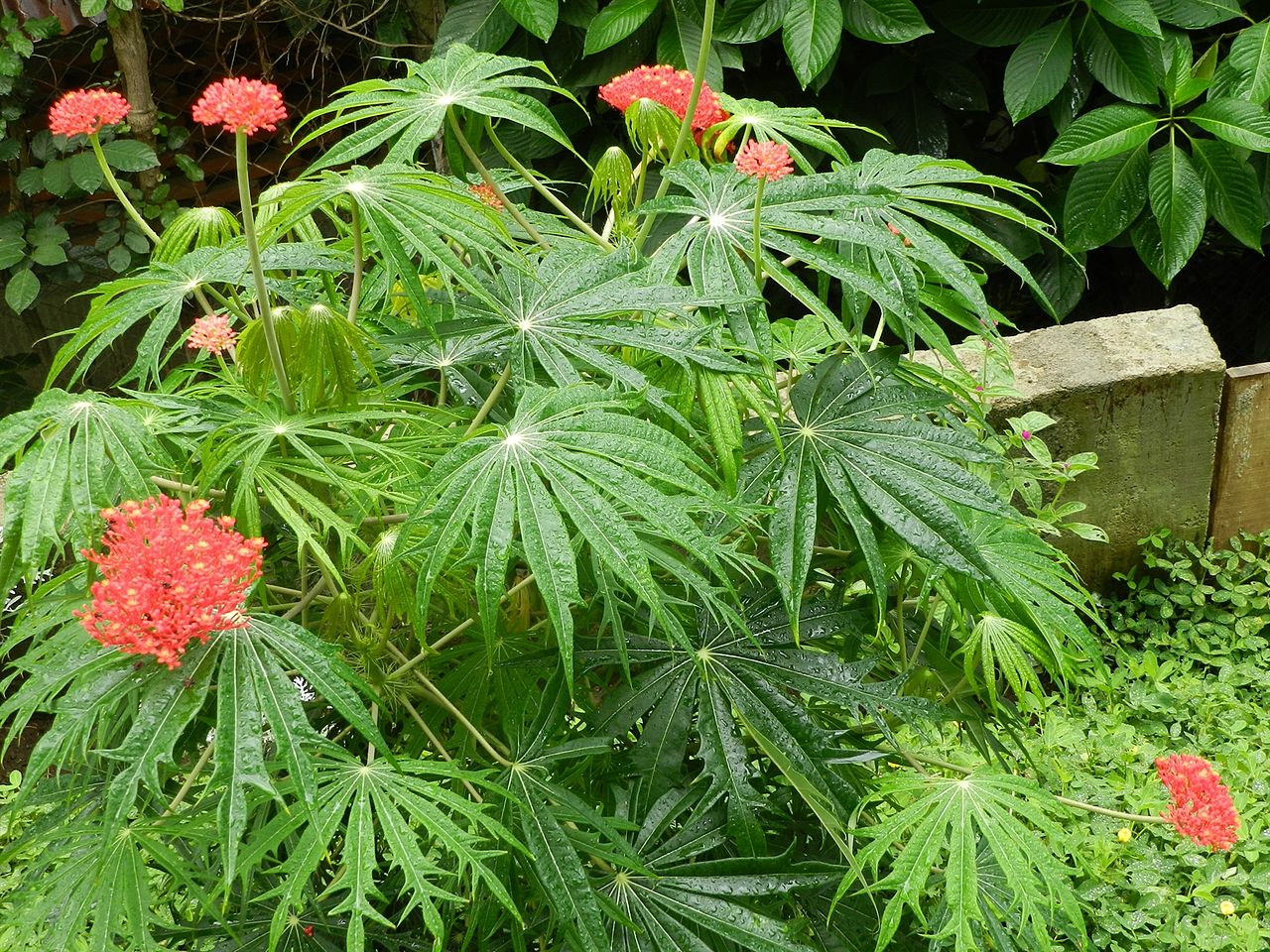Guatemala Rhubarb - Tips For Growing Coral Plants


Jatroha multifida is a hardy plant that thrives in nearly any lighting condition and grows like a weed. What is Jatropha multifida? The plant is grown for its huge, delicate leaves and brilliantly colored blooms. Sadly, this plant is tropical and suitable for United States Department of Agriculture zones 10 to 12 only. Those of us in the cooler zones can try growing coral plants as annuals during the summer.
What is Jatropha Multifida?
Jatropha multifida is also called Guatemala rhubarb and, more commonly, coral plant. It is a showy ornamental plant in the Euphorbia family. Like all members of the family, Jatropha exudes latex sap, which is milky to opaque. Growing coral plants requires little fussing. They are vigorous plants that can grow 6 to 10 feet (2-3 m.) tall and up to 20 feet (6 m.) in their native habitat. This is a frost sensitive specimen which can be killed if temperatures drop below 40 degrees F. (4 C.). The coral plant is a single-trunked small tree or shrub. It is native to Mexico and Central America. The foliage is deeply lobed, up to 12 inches (31 cm.) across, and cut into 7 to 11 leaflets in a palmate form. The upper surface of the leaf is dark green, but the undersides display a whitish cast. Flowers arise from thick stalks in cymes. Each flat-topped cluster has numerous tiny, bright pink, butterfly-attracting blooms. The fruit is a flat pod. All parts of Guatemala rhubarb are extremely poisonous if ingested.
Growing Coral Plants
Jatropha mutifida requires moderately fertile soil with excellent drainage. It has some drought tolerance once established but performs best with regular watering in a full sun situation. In cool zones, plant the specimen in a large container with a gritty houseplant soil. In-ground plants can tolerate rocky or sandy soil. Container plants should have water reduced in winter. The species tends to self-seed at the base of the plant and can also be propagated by cuttings. Pruning is necessary to keep the plant in habit and when damage is done to the stems.
Care of Coral Plants
Jatropha is remarkably unbothered by insects or disease. Overly wet plants and those that receive splashed mud on the foliage may experience root rot or leaf spot. Common pests include mealybugs, aphids, and scale, whose widespread feeding can diminish plant vigor and destroy the attractive leaves. The plant will benefit from fertilizer in late winter to early spring. Use a balanced plant food diluted by half once per month for potted plants. A time release food is perfect for in-ground plants. It will release nutrients over three months to buoy spring growth and the formation of the brilliant pink flowers. Warm zone gardeners will have a full season of blooming. Deadhead the plants to enhance appearances and diminish self-seeding starts. Overall care of coral plants is minimal and basic. The huge plant, shockingly bright flowers, and delicate leaves provide enough incentive for any effort expended by the gardener.
Sign up for the Gardening Know How newsletter today and receive a free copy of our e-book "How to Grow Delicious Tomatoes".

Bonnie Grant is a professional landscaper with a Certification in Urban Gardening. She has been gardening and writing for 15 years. A former professional chef, she has a passion for edible landscaping.